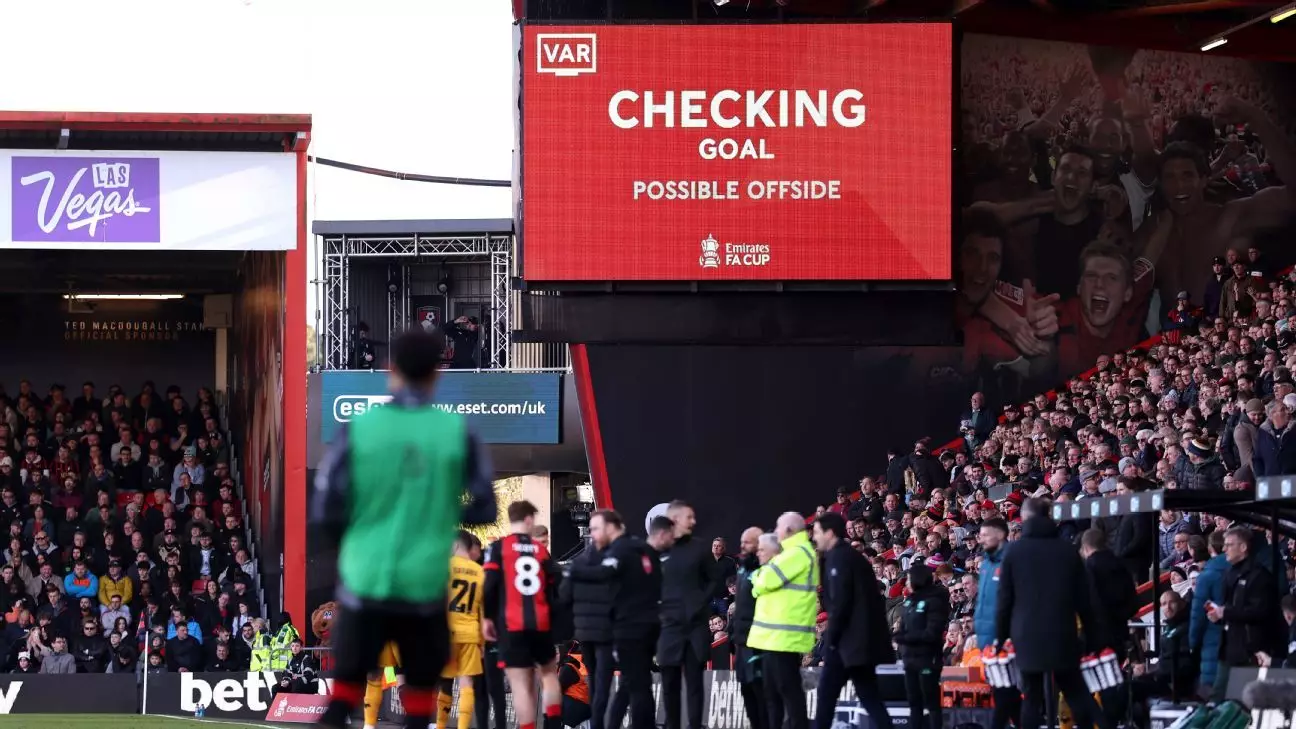The introduction of semi-automated VAR offside technology (SAOT) in the Premier League marks a significant turning point in how football officiating is approached. Set to debut during Matchweek 32 from April 12-14, the technology promises to reshape the officiating landscape, enhancing both accuracy and efficiency in offside calls. An innovation stemming from a unanimous decision by club officials a year ago, its arrival comes with both hope and skepticism as it navigates the complexities and pressures inherent in elite football.
The Journey Toward Implementation
Initially slated for release post one of the international breaks in 2024, the rollout of SAOT was delayed due to issues with rigorous testing. Tony Scholes, the Premier League’s chief football officer, expressed optimism earlier this year about the prospect of implementing this technology by the end of the current season. The testing phase has not been without complications, exemplified in its initial outings during the FA Cup. A notable instance occurred during the match between Bournemouth and Wolverhampton Wanderers, where an unprecedented eight-minute VAR review highlighted the lingering concerns regarding the technology’s reliability. Critics quickly pointed to this incident as emblematic of the growing pains any new system must endure.
Efficiency Vs. Accuracy: A Balancing Act
SAOT is designed to streamline the decision-making process in offside calls, with expectations that it will reduce review time by an average of 31 seconds. The technology combines automated tracking systems with human oversight—an endeavor to establish a reliable compromise between technology and traditional officiating methods. However, the underlying worries persist. Key figures in football governance have expressed doubts regarding the Premier League’s choice to develop its own version of SAOT rather than adopting systems already successfully implemented in other leagues, such as Serie A and LaLiga. As these leagues have experienced their share of controversies—like the contentious decisions involving high-profile players —the question remains whether the Premier League’s commitment to an in-house solution will ultimately prove to be prudent or problematic.
Insights from International Implementations
While FIFA and UEFA have successfully utilized advanced iterations of VAR technology—including a system that embeds chips within the soccer balls for pinpoint accuracy—the Premier League faces limitations, chiefly due to contractual partnerships with different ball suppliers. This limitation raises broader questions about the Premier League’s competitiveness on the global stage and whether its innovations, or lack thereof, might put it at a disadvantage compared to leagues adopting more refined technologies.
The experience of Serie A, which suffered a significant VAR error that impacted a crucial goal, illustrates how quickly public sentiment can turn against technological interventions in officiating. LaLiga, too, has seen its share of controversies, including the disallowed goal for superstar Robert Lewandowski. In light of this, the Premier League’s risk of adopting a variant of SAOT that might not reach the expected benchmarks for accuracy is both troubling and illustrative of the need for quality assurance in football technology.
Future Implications in Elite Football
As the saga of VAR evolves, it becomes essential to scrutinize how semi-automated systems affect the essence of the game itself. What remains at stake extends beyond technical accuracy; it touches on the broader narrative of football, impacting player morale, fan perceptions, and the critical atmosphere within stadiums. Fans crave clarity and fairness in officiating, and the successful integration of SAOT could potentially restore faith in the system. However, unless Premier League officials can consistently deliver on the promises of enhanced accuracy and efficiency, the adoption of SAOT might backfire, leading to further disillusionment among supporters and players alike.
The decision to forge ahead with SAOT adds a layer of complexity to the ongoing debate surrounding technology in sports. It highlights an undeniable truth: that while technological advancements can drive improvement, they must be wielded judiciously to truly resonate with the spirit of the game. As we approach the critical rollout date, all eyes will be on the Premier League to see whether its gamble on SAOT will usher in a new wave of clarity in officiating or further ignite the ongoing discourse surrounding technology in football.

